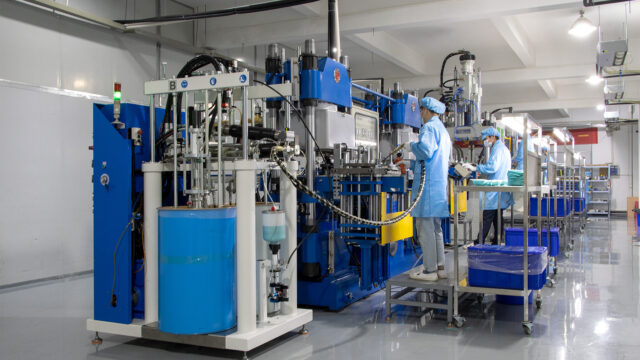NEWTOP MEDICAL lsr molding technology can help medical device manufacturers produce complex parts with good integrity, but choosing the right materials and processes is also critical.
Liquid silicone injection molding technology is referred to as lsr molding, which helps to produce high-precision, complex medical device components, especially in mass production, and the need to achieve the integrity of each component. In this article, we will describe the main advantages of liquid silicone injection molding technology in medical device manufacturing, as well as some issues to consider.
Material of Lsr molding
While many types of materials are suitable for injection molding, the main material recommended for medical device applications is medical-grade liquid silicone. Silicone is versatile and, as a liquid feedstock, offers many advantages in the process, making it the material of choice for high-volume production of technical components.
Lsr molding not only creates the opportunity to produce extremely complex parts but is also ideal for producing parts with many details (such as undercuts or thin-walled parts), giving the designer extensive design freedom and multiple parts being made fully fused components, ideal for avoiding dead spots in medical devices and enabling hygienic designs. In addition, a single assembly is more suitable and lighter in weight than assemblies of multiple assemblies, thereby avoiding the risks and costs associated with the secondary assembly.
But an important premise is that the medical device manufacturer’s engineering team and the medical-grade silicone injection molding component manufacturer’s injection molding engineering experts must work closely together to realize these benefits.
Cooperate with professional silicone manufacturer
On the one hand, mold is the basic factor that determines the success of injection molding of parts; on the other hand, the biggest “disease” of injection molding is also related to the complexity of the finished product. Steel mold hot runner or cold runner modules and associated process automation equipment for the production of medical devices are very expensive, and costs must be considered in any manufacturing process. This is a problem that cannot be ignored in lsr molding.
However, high initial tooling costs cannot be judged from a cost standpoint alone but should be calculated based on inputs over the mold life cycle. Because liquid silicone injection molding can produce a large number of high-integrity parts, tooling costs are relatively low from a per-part perspective throughout the production cycle. In order to ensure long-term high-efficiency and cost-effective continuous production, the preliminary design of the medical device must be reasonable, and the mold design structure and all aspects of the entire process must be carefully considered.
There are some issues with handling. Part thickness can be limited to avoid shrinkage issues; parts may also require additional costs for trimming operations. Both of these issues can be addressed through close collaboration between medical device designers and manufacturers of medical-grade liquid silicone components. For example, similar problems can be avoided if molds and processing equipment are professionally designed.
In conclusion
We can conclude that lsr molding is an important manufacturing method for silicone medical parts. And its manufacturing material and manufacturer selection are important factors that directly affect the expected performance of the product. So if you are looking for a manufacturer with lsr molding ability, then Please contact NEWTOP’s engineering team, we will be happy to solve your needs.


